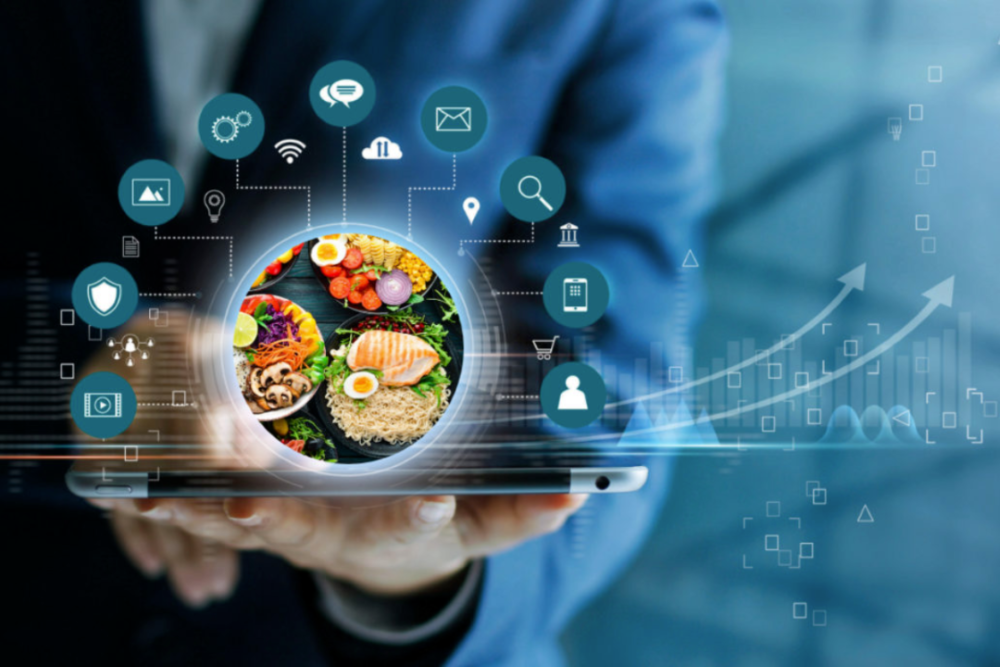Within the vast tapestry of human history, the resounding symphony of progress emerges due to the seamless fusion between the forces of innovation and necessity. In the present moment, we are immersed in a transformative period wherein technology has evolved beyond being a mere companion to assume the role of a masterful conductor, orchestrating profound shifts in all facets of our existence. A profound metamorphosis is underway in the sustenance realm, which lies at the core of our being. This metamorphosis pertains to the future of food, a subject of utmost importance.
Precision Agriculture: Crop Data Cultivation
Within the vast expanse of the agricultural realm, a profound transformation is taking place—a phenomenon known as precision agriculture is emerging. While still productive, conventional practices of agriculture are transforming data-centric precision farming. Contemporary farmers employ advanced tools, encompassing sensors, drones, and satellite imaging, to acquire instantaneous and valuable information about their agricultural produce. These advanced technologies offer insights into soil health, weather patterns, and crop growth, empowering farmers to maximize their planting, irrigation, and fertilization practices. Through the utilization of data analytics, farmers possess the ability to make well-informed decisions that not only contribute to the conservation of valuable resources but also enable them to optimize yields. This, in turn, fosters the implementation of sustainable agricultural practices, which are crucial in meeting the needs of a rapidly expanding global population.
Genetic Alchemy: Customizing Crops for the Future
As the sun descends upon the age-old practices of traditional farming, a new era emerges, characterized by the advent of genetic engineering and biotechnology. Scientists are currently involved in a fascinating endeavor known as genetic alchemy, wherein they skillfully manipulate the DNA of crops to fulfill precise specifications. Genetic modification, frequently facilitated by genetically modified organisms (GMOs), has emerged as a formidable and influential tool. This technique can augment the nutritional value, bolster resistance against pests and diseases, and tailor crops to thrive in various environmental conditions. Genetically modified organisms (GMOs) possess the capacity to effectively tackle the pressing issues of malnutrition and food scarcity on a worldwide level. Furthermore, they offer the added advantage of substantially diminishing post-harvest losses using extended shelf life variations.
Culinary Renaissance: Meat Without the Livestock
At the core of our dining experience resides a profound metamorphosis. The advent of laboratory-cultivated meat and plant-based substitutes fundamentally transforms our consumption patterns. Cultivating meat in a laboratory setting, derived from animal cells and nurtured within a meticulously controlled environment, presents a compelling and conscientious substitute for conventional livestock agriculture. This solution offers great promise in addressing meat production’s environmental impact and ethical concerns associated with animal agriculture. In parallel, there is a growing trend in the development of plant-based alternatives that aim to faithfully mimic the flavor and consistency of meat, appealing to the preferences of vegans and individuals who prioritize environmental sustainability.
Art and Science in the Kitchen: AI’s Culinary Canvas
The culinary world has been significantly impacted by the introduction of Artificial Intelligence (AI) and Machine Learning (ML), each offering its distinct contributions. In the future kitchen, artificial intelligence algorithms diligently analyze consumer preferences and market trends, skillfully optimizing the processes of food production, distribution, and marketing strategies. In culinary operations, automation systems and robots have achieved remarkable food preparation, packaging, and delivery proficiency. The convergence of artistry and scientific principles within the culinary realm fosters an enhanced, tailored, and immensely gratifying gastronomic encounter.
Creating Trust Through Blockchain and Food Traceability
Trust plays a pivotal role in the realm of food, and the utilization of blockchain technology is steadily gaining recognition as a powerful instrument to augment it. Through the implementation of blockchain technology, the establishment of transparent and traceable supply chains becomes possible. This innovative approach guarantees that consumers are empowered with the ability to meticulously track the entire journey of their food, right from its origin on the farm to its ultimate destination on their plates. The practice fosters a sense of trust and amplifies accountability within the food industry. In addition, Internet of Things (IoT) devices play a crucial role in monitoring storage and transportation conditions, thereby providing consumers with the assurance of consuming safe and high-quality food.
Virtual and augmented gastronomy: Going Beyond Reality
The trajectory of food experiences is poised to transcend the banal, delving into the uncharted territories of augmented reality (AR) and virtual reality (VR). Augmented reality (AR) applications offer the ability to obtain instantaneous nutritional information and provide recipe recommendations by scanning food items. In contrast, virtual reality (VR) presents a remarkable opportunity to engage in immersive cooking classes and partake in extraordinary dining experiences, revolutionizing culinary education and entertainment. The integration of technology enhances our gastronomic exploration, captivating both the intellect and the taste buds.
Tackling the Challenge of Waste: Innovations in Packaging and Preservation
Technology is playing a pivotal role in the endeavor to create a sustainable future by significantly reducing food waste. Cutting-edge packaging solutions, advanced preservation methods, and state-of-the-art recycling technologies are currently under development. Utilizing cutting-edge technology, intelligent packaging integrated with advanced sensors diligently tracks the optimal freshness of its contents, promptly alerting consumers regarding expiration dates. This revolutionary system effectively curtails excessive waste, fostering a more sustainable and environmentally conscious approach. Adopting this environmentally conscious approach aligns with our shared duty to responsibly manage and protect the environment.
Conclusion The landscape of food’s future is adorned with vivid shades of technological progress. From the realm of precision agriculture to the realm of genetic engineering and from the emergence of AI-powered kitchens to the development of sustainable alternatives, the array of possibilities that lie before us is extensive and brimming with promise. To shape a future characterized by an abundance of food that is easily accessible and in harmony with our planet, we must exercise prudence and foresight in harnessing the power of technology. As we embark upon the journey into the future, let each morsel we consume serve as a testament to our profound capacity for responsible innovation. May our sustenance not only nourish our physical beings but also contribute to the well-being of our planet.











Welcome To Biz Times Now
Welcome to Biz Times Now, the leading business magazine dedicated to providing invaluable insights and strategic guidance to top-level executives and managing personnel.